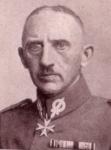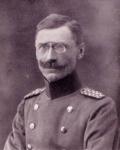-
Posts
2,234 -
Joined
-
Last visited
-
Days Won
55
Content Type
Profiles
Forums
Blogs
Gallery
Events
Store
Everything posted by Glenn J
-
Rick, first names later if required: 1880: Oberst von Gallwitz-Dreyling Oberstlieutenant von Tschischwitz 1881: Oberst von Prittwitz und Gaffron 1882: Oberst von Prittwitz und Gaffron 1883: Oberst von Prittwitz und Gaffron 1884: Oberst von Prittwitz und Gaffron Oberstlieutenant von Roon 1885: Oberst von Prittwitz und Gaffron Oberstlieutenant von Roon 1886: Oberst von Prittwitz und Gaffron Oberstlieutenant von Roon 1887: Oberst von Estorff Oberstlieutenant von Roon 1888: Oberst von Estorff Oberstlieutenant Freiherr von Fircks Regards Glenn
-
Major Philipp Sander is shown as the Adjutant of the 6. Division in the 1914 edition of the Prussian Army List. He was awarded his PLM as the commander of Reserve-Infanterie-Regiment Nr. 65. Promoted to Oberstleutnant on 18.5.20 and to Oberst on 1.4.1921 he retired as the Oberst on the staff of Infanterie-Regiment 18 in Paderborn on the 3.8.1921. He is not in my list of "Tannenberg" charakter promotions of 1938 so although still alive in the 1930s may well have been dead by the anniversary of Tannenberg in 1938. Regards Glenn
-
Chris, Rupprecht Freiherr B?cklin von B?cklinsau was a former active member of the 4. G.R.z.F. serving from 1894 until his transfer to the Reserve of his Regiment in early 1901. Promotions as follows: Sekonde-Lieutenant/Leutnant: 18.10.95 N4n Oberleutnant der Reserve: 27.1.06 Hauptmann der Reserve: 20.5.13 In 1933 he was living at Rust in Baden. Regards Glenn
-
Greetings Paul, 1. Beamte or officials are quite a complicated subject. The term literally translates as an "official", i.e. a public servant. For the purpose of the imperial military there were two distinct types: Military officials and civilian officials of the military administration. They carried out essential military administrative tasks such as as logistics, military law, barracks, military hospital and garrison housing administration, weapons maintenance, saddlery, clerical and other administrative non front line functions essential to the running of the army. In most other armies these guys would have been soldiers in support functions. They were subject to military law but were not in the German sense soldiers. In a modern amy these guys would be officers or NCOS in logistic branches of the service. 2. See-Bataillon officers were technically officers of the Kaiserliche Marine. Like their counterparts in the colonial troops they had first to"retire" from the army on transfer to the See-Bataillone. The US or Royal Marines I think is quite a good analogy. Their promotions, postings retirements etc were initially listed amongst those of the Kaiserliche Marine (Navy) personnel. Regards Glenn
-

WW2 Civilian "Mention In Dispatches" 1 Life
Glenn J replied to a topic in State, Civil Awards & Decorations
-
Wayne, the Nash book is basically a reprint of a period British Army intelligence manual. It deals in general terms with recruiting, officer & NCO selection/training, the various branches including medical and veterinary services, some details on ordnance and uniforms. It does not contain order of battle material other than an overview of the peacetime corps areas. It is not without errors and although interesting it is not indispensible and I would recommend Cron. I have the German language edition which as Chris alludes to is rather dry stuff but very useful. Regards Glenn
-
David, a Stammliste of both regiments is contained in Volume 2 of Schwarze Husaren. I looked for your officer but only came across reference to an officer by the name of Louis von Driesen gen. v.d. Oest of Leib-Husaren-Regiment Nr. 2 whose details are apparently in volume 1. I can check volume 1 for you in two weeks time when I return to the library and see if there is anything of interest on him. I can't next weekend as I will be in Berlin. Regards Glenn
-
Although I would generally agree with Kurt that the rank of Offizierstellvertreter was utilized by career NCOS in officer positions it was not uniquely so. Certainly in the earlier phase of the war many Vizefeldwebel der Reserve (i.e. former "One Year Volunteers" and reserve officer aspirants) were appointed to Offizierstellvertreter prior to commissioning. The Kriegs-Besoldungs-Vorschrift (D.V.E. Nr. 101) stipulated prewar who could be appointed as an Offizierstellvertreter by the regimental or independent battalion commander: a. Active F?hnriche and Fahnenjunker (Unteroffiziere). b. Vizefeldwebel and Unteroffiziere of the Reserve/Landwehr who possessed the certificate of competence to be a reserve or Landwehr officer (Offizier-Aspiranten). c. Former officer aspirants. And then if further need arose: d. Active Feldwebel and Vizefeldwebel. e. By Landwehr and Landsturm units - former active NCOs. Regards Glenn
-
Les, Dr. phil. Kurt-Gerhard Klietmann died on the 14th of October 1990. He had studied archaology, nusmismatics and ancient history at the university of Berlin. He was severely wounded in WW2 and rendered unfit for further service. He then had the opportunity to study at the Potsdam War Archives before they were destroyed. Regards Glenn
-

EK 1914 Some pics, you might enjoy...
Glenn J replied to Gerd Becker's topic in Germany: All Eras: The Iron Cross
Tom & Stephen, a couple of copies at zvab.de. Expensive though! Full title: Geschichte des k?niglich bayrischen 15. Infanterie-Regiments K?nig Johann von Sachsen im Feldzuge 1870/71 gegen Frankreich Regards Glenn -
Hi Wild Card, Julius Hermann von Mertens was promoted to Generalmajor on the 2nd of August 1888. He retired in late 1889 and died on the 10th of February 1900. That looks like a "1" on the epaulette fields so presumably taken when he commanded the Ostpreu?isches J?ger-Bataillon Nr. 1 from 15 Feb 1879 - 30 March 1880. Regards Glenn
-
More on Riese: Oberkriegsgerichtsrat Wilhelm Riese was born in 1857. He was commisioned from the 1. Bataillon (Essen) 8. Westf?l. Landwehr Regiment Nr. 57 as a Seconde Lieutenant der Reserve in Infanterie-Regiment Nr. 131 on the 11 December 1884. Promoted to Premier-Lieutenant der Reserve on 21 Jan 1894 he transfered into Landwehr status on the rolls of Landwehrbezirk K?nigsberg in the same year. By 1894 he was the Division Auditeur of the 2. Division at K?nigsberg in East Prussia and had already been awarded the LD2. He married the same year - Margarete Deutschmann on the 20th of October. He was awarded the brevet or Charakter of Justizrath on 13 December 1898. He was transfered to the 39. Division in early 1899 and retired from Landwehr service in 1899/1900. He was assigned to the staff of the V. Armeekorps in 1900/1901 and his title changed on 1 October 1900 to that of Kriegsgerichtsrat per the A.K.O. of 31 March 1901. He was promoted to Oberkriegsgerichtsrat on 2 December 1909 and assigned to the staff of the IX. Armeekorps. Regards Glenn
-
Stephen, Anton Traxler von Schrollheim (presumably the nephew as discussed above) was born at Josephstadt in Bohemia on the 10th of August 1864 as the son of a postmaster. He entered the Theresia Military Academy at Wiener-Neustadt in 1882 from which he graduated as a Lieutenant in 1885 in Dragoner-Regiment Nr. 5 Kaiser von Russland. he was promoted to Oberlieutenant on the 1st of May 1889 on transfer to Dragoner-Regiment Nr. 10 F?rst zu Liechtenstein. After attending the War School he was assigned to the General Staff on the 1st of February 1893 and was assigned as a General Staff officer to the 18th Cavalry Brigade in Budapest. Promoted to Hauptmann 1. Classe on the 1st of May 1896 he was serving in the 8. Galizisches Uhlanen-Regiment as a Rittmeister in 1901. A Major since 1 Nov 1903 he was serving as the Chief of Staff of the 11th Infantry Division at Lemberg in 1904. His promotion to Oberstleutnant was on the 1st of May 1908. He is show in 1909 as the commander of the 1st Division of the 1. Galizisches Ulanen-Regiment. A division was a Half-Regiment. He retired in 1911 and was then employed as a uniformed retired officer (in Lokalverwendung) at the Military Veterinary High School in Vienna where he spent the remainder of his career until 1918. He received a brevet promotion to Oberst (mit Titel and Charakter) sometime after 1916. In 1914 he shown as living at Strohgasse 9 in Vienna's 3rd District. Regards Glenn
-
Stephen, a little bit more information from my friend J?rg C. Steiner in Vienna: Traxler was enobled on the 24th September 1878 and as he appears to have had no children of his own, this heriditary nobility was passed along to his two nephews - Josef and Anton on the 31st July 1879. In 1879 he went onto half-pay status (Wartegeb?hr) for one year on account of being unfit for service due to illness. In 1881 he definitively retired as an Oberst. Regards Glenn





